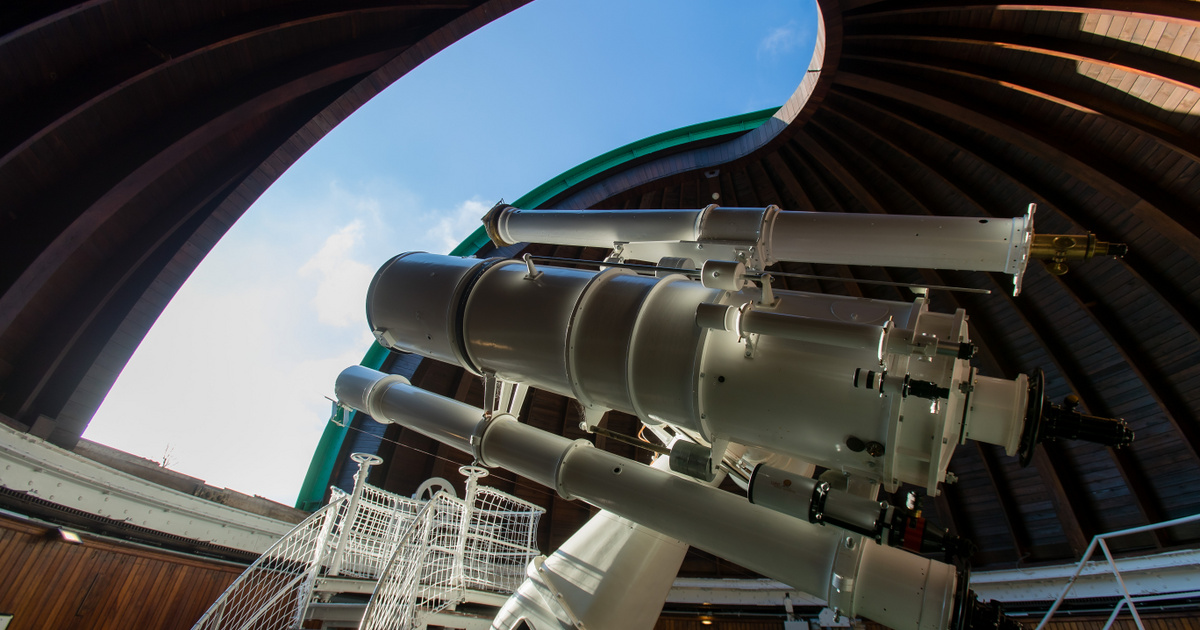Then, on August 4 and 5, Mars will reach the top of the upper horn of Taurus, so Jupiter, Mars and Aldebaran will form an isosceles celestial triangle – as Svábhegyi Csillagwiszlagóló wrote in her announcement, where, due to special conjunctions, unusually with the morning program, visitors are welcome.
On July 30, the waning crescent will be visible about 30 degrees above the eastern horizon, with the gray glow of its unlit side visible. With a small pair of binoculars, you might catch a glimpse of the now-dormant Copernicus Crater with its terraced walls or even the larger Longomontanus Crater in the southern hemisphere.
To its right, at a height of two degrees, you will see the star cluster Phaestus. The faint bluish-white group of stars will appear as a hazy patch next to the crescent, but twenty of its stars will be visible with a hand-held telescope.
Five degrees below the crescent will be the planet Mars, which looks like a typical reddish star because it is a planet and shines with a steady light, not a twinkle. To see the 89 percent phase of the planet or the dark sea of Mare Sirenum, you will need a telescope with at least 200x magnification.
Six degrees below Mars will be an equally bright orange star, Aldebaran. The star that marks the Eye of Taurus is a red giant, 45 times the diameter of the Sun, which is why it can be seen as orange to the naked eye. As a star, it twinkles in comparison to the constant brightness of Mars, and you will also be able to play with the colors of the rainbow.
The fifth object of the conjunction will be the brighter, star-like Jupiter. It will appear five degrees to the left of Aldebaran, as an unmistakably bright white star of uniform brightness. With a portable telescope, the four Galilean moons orbiting it will also be visible, and with a tripod telescope, the equatorial cloud bands of the planetary disk, 35 arc seconds across, are also easily visible.
A sixth celestial body, Uranus, also joins the telescopic encounter. The green star-like planet can also be observed with a handheld telescope 5.5 degrees below and to the right of Viastyuki. However, its very small disk, only 3.5 arcseconds across, can only be seen as a planetary disk at 200x magnification.
According to the statement, the visual conjunction on August 4 and 5 will be very exciting due to the distinctive location of Mars.
Red Mars is attached to the top of the Hyades, a V-shaped star cluster that forms the head of the constellation Taurus. The already famous orange star Aldebaran will sit on its lower leg. The bull's head appears to have two red eyes, along the origins of its horns, and between the horns enters Jupiter as a bright, white, star-like orb. The three bright “stars” form an obtuse isosceles triangle, with red Mars at the top and bright white Jupiter to the left.
Svábhegy Observatory Programs
During the programs in the capital's largest planetarium, Svábhegyi Csillagwiszgáló, in the Budapest Dome, it will be possible to make special observations with the giant local telescope. With the help of the giant telescope, the moon, planets and double stars can be seen with magnifications of up to hundreds of times, and the mirror telescope is especially useful for star clusters, star curls and rings. and celestial gas nebulae.
Among the celestial displays, the seven brightest stars of the Phaistiox will be visible even to the naked eye, and dozens of bluish-white stars in the depths of the cluster can be seen through local telescopes. You can also observe the colorful cloud bands of Jupiter and its four Galilean moons, the ring system of Saturn and its orange giant moon Titan, Mars and Uranus, whose bright green disk will be clearly visible through the local giant telescope.
The objects on display at the event may differ from those previously announced, due to current weather conditions. If the weather is overcast and the stars are not visible, visitors can take a virtual planetary tour to look deep into the celestial spheres that cannot be seen even with the largest telescope. A detailed program can be found on the observatory’s website.














































